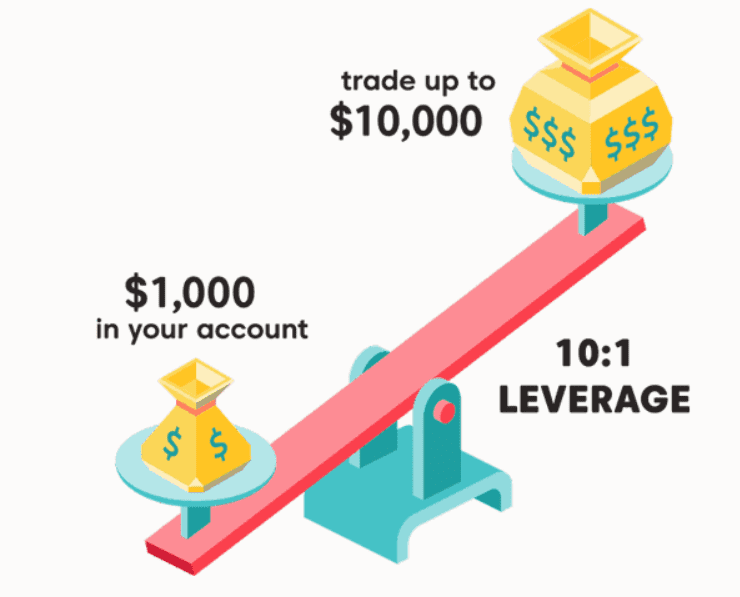Forex Margin Trading: Trading with Borrowed Funds to Control Larger Positions. Explore How Margin Trading Offers Traders Increased Market Exposure, Amplified Profits, and Enhanced Trading Opportunities. Discover How to Utilize Margin Wisely, Manage Margin Requirements, and Implement Risk Management Techniques to Navigate the Opportunities and Risks of Margin Trading.
Forex trading is a captivating and dynamic financial market that offers numerous opportunities for traders to profit from the fluctuations in currency exchange rates. Among the various trading strategies, forex margin trading stands out as an enticing option for those seeking to control larger positions with borrowed funds. In this article, we will explore the concept of forex margin trading, how it works, its benefits, risks, and best practices for successful margin trading.
Table Content
1. Understanding Forex Margin Trading
2. How Forex Margin Trading Works
3. Benefits of Forex Margin Trading
4. Risks of Forex Margin Trading
5. Best Practices for Successful Margin Trading
6. Footnote
7. FAQs
Understanding Forex Margin Trading
Forex margin trading is a method of trading that allows traders to control larger positions in the forex market using borrowed funds from their brokers. The borrowed funds, known as "margin," act as a leverage mechanism, enabling traders to amplify the potential gains (and losses) of their trades. By leveraging their capital, traders can control positions significantly larger than what they could with their own funds alone.

How Forex Margin Trading Works
In forex margin trading, the trader needs to deposit a certain amount of money, known as the "margin requirement," with the broker to open a leveraged position. The margin requirement is typically a percentage of the total position size and varies depending on the broker and the currency pair being traded. For example, if a broker offers a 1% margin requirement, the trader needs to deposit $1,000 to control a position worth $100,000.
The leverage ratio determines the amount of leverage applied to the trade. If the leverage ratio is 100:1, the trader can control $100 in the market with just $1 of their own money. This leverage enhances the potential for profits, but it also increases the risk of significant losses.
Benefits of Forex Margin Trading
- Larger Position Size: The primary advantage of margin trading is the ability to control larger positions than would be possible with only the trader's own capital. This allows traders to participate in more substantial market movements and potentially generate higher profits.
- Increased Profit Potential: Leverage amplifies the gains on successful trades, allowing traders to make more significant profits with a smaller initial investment.
- Diversification Opportunities: With margin trading, traders can diversify their trading strategies by opening multiple positions in different currency pairs simultaneously.
- Short-Selling: Margin trading enables traders to take advantage of falling markets by selling a currency pair without owning it initially, a practice known as "short-selling."
Risks of Forex Margin Trading
- High Risk of Loss: While leverage magnifies potential profits, it also increases the risk of substantial losses. A small adverse market movement can lead to significant losses, and traders may lose more than their initial investment.
- Margin Calls and Liquidation: If a trade moves against the trader, and the account balance falls below the maintenance margin level (the minimum margin required to keep the position open), the broker may issue a margin call or liquidate the position to cover losses.
- Overtrading: The ease of access to leverage may tempt traders to overtrade, increasing the risk of financial exposure and emotional stress.
- Market Volatility: High leverage during periods of extreme market volatility can lead to unexpected price swings and increased uncertainty.
Best Practices for Successful Margin Trading
- Risk Management: Implementing effective risk management strategies is paramount in margin trading. Traders should set stop-loss orders to limit potential losses and avoid risking too much of their capital on a single trade.
- Education and Research: Acquiring a comprehensive understanding of forex market dynamics and conducting thorough research on currency pairs can help traders make informed decisions.
- Start Small: Novice traders should begin with conservative leverage levels and small position sizes until they gain confidence and experience in margin trading.
- Stay Informed: Traders should stay updated with market news, economic indicators, and geopolitical events that can influence currency prices.
- Practice with Demo Accounts: Newcomers can practice margin trading with demo accounts provided by brokers to gain practical experience without risking real money.
Footnote
Forex margin trading offers a unique opportunity for traders to access larger positions and potentially boost their profits in the dynamic forex market. However, it comes with significant risks that require careful consideration and effective risk management. Traders should approach margin trading with a clear understanding of the concept, market dynamics, and the discipline to implement best practices for successful and responsible trading.
FAQs
Q: What is forex margin trading?
A: Forex margin trading is a method of trading that allows traders to control larger positions in the forex market using borrowed funds from their brokers.
Q: How does forex margin trading work?
A: In forex margin trading, traders deposit a certain amount of money as "margin" with the broker to open leveraged positions, allowing them to control larger positions than they could with their own funds alone.
Q: What are the benefits of forex margin trading?
A: The benefits of forex margin trading include larger position sizes, increased profit potential, diversification opportunities, and the ability to engage in short-selling.
Q: What are the risks of forex margin trading?
A: The risks of forex margin trading include high risk of loss, margin calls and liquidation, overtrading, and exposure to market volatility.
Q: What are some best practices for successful margin trading?
A: Best practices for successful margin trading include effective risk management, education and research, starting with conservative leverage, staying informed, and practicing with demo accounts.











Discussion